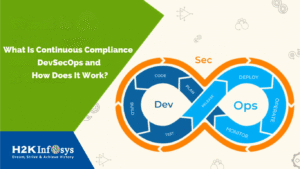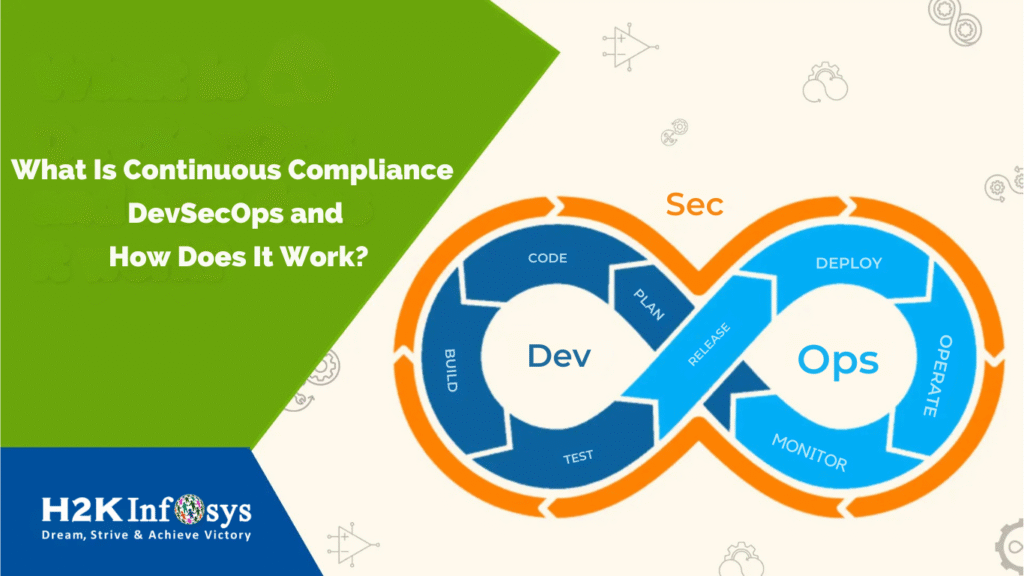All facets of software development are made more efficient and predictable by the complementary techniques of DevOps and Agile methodology. The DevOps and Agile methodology is an iterative approach to software development that prioritises user feedback, quick software releases, and teamwork. It’s a management and culture philosophy that seeks to instil in each team member a commitment to value delivery to consumers and ongoing improvement. A software delivery methodology called DevOps breaks down the divisions that now exist between development and operations teams. Teams working in DevOps leverage techniques and tools to automate manual, slow activities like provisioning infrastructure or deploying code. The speed at which an organisation may provide services and apps is improved by these methods and tools. Check out the online DevOps course to learn more.
What are the similarities between agile methodology and DevOps?
The constraints of conventional, more inflexible software development approaches gave rise to the agile methodology in 2000. Its fundamental beliefs, tenets, and procedures were delineated in the 2001 publication titled “Manifesto for Agile Software Development.” Agile development methodologies prioritise iterative development, continuous delivery, quick change, and customer collaboration.
Agile methodologies served as the foundation for DevOps, This DevOps and Agile which emerged from the necessity for more collaboration between the development and operations teams. DevOps was first used in 2009 by Patrick Debois. Debois extended the concepts of agile methods to encompass automation and operations. Agile methods are strengthened by DevOps, which offers new areas of concentration.
We next go over some further similarities between agile and DevOps practices.
Objectives
The goal of both DevOps and Agile methodologies is to enhance the software development and delivery process. They also encourage teamwork, effectiveness, and ongoing development. This DevOps and Agile Both of them take advantage of cross-functional cooperation to give feedback loops and enhance work over time. Lean concepts are applied both to optimise and streamline operations.
Teams are encouraged to implement improvements, collaborate, and remove bottlenecks by using DevOps and agile approaches. This DevOps and Agile makes it possible for both approaches to increase software development pace without sacrificing quality.
Quality assurance
Testing is emphasised in both DevOps and Agile methodologies to guarantee software stability. Both concentrate on testing code modifications to find problems as soon as possible. Common test types include unit tests, functional tests, performance tests, acceptance tests, and integration tests.
Throughout the development process, DevOps and Agile teams may produce dependable, high-calibre software by emphasising frequent code testing.
Continuous improvement
DevOps and agile methodologies encourage a culture of growth, learning, improved procedures, and advancement. Iteratively making little adjustments, teams enhance a product.
Retrospectives and other Scrum practices are used by the agile approach to support the development of an improvement culture. For example, a team reviews its performance at the end of each iteration and considers areas for improvement. They pinpoint future initiatives to boost output, client happiness, and teamwork.
In a similar vein, DevOps teams identify opportunities for improvement by tracking data and doing post-incident evaluations.
Collaboration and Communication
Both DevOps and Agile prioritize strong collaboration among teams. Agile fosters close interaction between developers, testers, and business stakeholders, while DevOps extends this collaboration to include IT operations and security teams. This DevOps and Agile ensures better coordination throughout the software development lifecycle.
Focus on Customer Satisfaction
DevOps and Agile methodologies emphasize delivering value to customers by incorporating their feedback at every stage. Similarly, DevOps enhances this by ensuring faster and more reliable deployments, reducing downtime, and improving user experience through continuous monitoring.
Continuous Improvement and Iterative Approach
Both DevOps and Agile adopt an iterative process for development and delivery. Agile teams work in short cycles (sprints) to refine features based on user feedback, while DevOps practices, such as continuous integration and continuous deployment (CI/CD), ensure rapid and incremental software updates.
Automation for Efficiency
Automation is a fundamental aspect of both DevOps and Agile. Agile encourages automated testing to maintain code quality, while DevOps expands automation to the entire pipeline, including code integration, testing, deployment, and infrastructure provisioning.
Rapid and Frequent Releases
Agile breaks down projects into smaller deliverables, allowing frequent releases. DevOps complements this by enabling automated deployments, reducing manual intervention, and ensuring faster go-to-market cycles.
Emphasis on Feedback Loops
Feedback loops are crucial for both DevOps and Agile. Agile uses customer feedback to refine product features, whereas DevOps integrates continuous monitoring and logging to identify performance issues, security risks, and areas for improvement.
Culture of Flexibility and Adaptability
DevOps and Agile Both methodologies encourage a culture of adaptability, where teams can quickly respond to changes in customer needs, market conditions, and technology trends. This DevOps and Agile flexibility helps organizations stay competitive and deliver high-quality products.
End-to-End Responsibility
Agile promotes cross-functional teams responsible for the entire development process, while DevOps extends this responsibility to deployment and maintenance. This DevOps and Agile ensures accountability and improves the overall efficiency of the development and operations teams.
Key differences: Agile practices vs. DevOps
DevOps and Agile methods are complementary methods for delivering software. They focus on unique ideas and methods to address client needs uniquely.
Purpose
Software development in small steps is the main goal of the agile methodology. It motivates groups to work together with clients, provide value, and adapt swiftly to changes. Agile approaches are used by teams in software development to effectively adapt to changing market demands and client needs.
Operations teams within the agile software development culture are included in DevOps. Delivering and deploying the program to end users is the responsibility of operations. If there are frequent modifications to the program, the operations team must also adapt. They have to handle changes in the software environment setup, which is harder as the application grows in size
The goal of DevOps is to eliminate silos and emphasise cooperation between the development and operations teams. Software deployment is more flexible and efficient when using a variety of techniques and technologies.
Principles
The four primary tenets, or priorities, of the agile approach, are as follows:
- People and their interactions with procedures and equipment
- Functional software as opposed to thorough documentation
- Client cooperation as opposed to contract drafting
- Adaptation as opposed to strict adherence to a plan
Throughout the course of a project, agile teams embrace change and provide incremental and iterative development. They include clients at the outset and all the way through, which makes it easier for teams to adapt to requirements from clients.
In comparison, the abbreviation CALMS encapsulates the five primary tenets of DevOps:
The abbreviation CALMS serves as a guiding framework for organizations implementing DevOps practices, encapsulating the five primary tenets that define a successful DevOps culture. Each component—Culture, Automation, Lean, Measurement, and Sharing—plays a crucial role in ensuring the efficiency, scalability, and sustainability of DevOps initiatives. Let’s explore each of these principles in detail:
1. Culture
Culture is the foundation of DevOps, emphasizing collaboration, shared responsibility, and open communication between development and operations teams. Traditional silos that separate developers, testers, IT operations, and security teams are broken down to foster a collaborative and cross-functional work environment.
A DevOps culture encourages a mindset shift where teams embrace change, continuous learning, and experimentation without fear of failure. Organizations that cultivate a strong DevOps culture prioritize blameless postmortems, knowledge sharing, and psychological safety, ensuring that team members can contribute freely and innovate without constraints.
2. Automation
Automation is a key driver of DevOps success, enabling teams to streamline and accelerate software development, testing, deployment, and infrastructure management. By automating repetitive and time-consuming tasks, DevOps minimizes human intervention, reduces errors, and improves overall efficiency.
Key areas where automation is heavily applied in DevOps include:
- Continuous Integration (CI) – Developers merge code changes frequently, triggering automated builds and tests.
- Continuous Deployment (CD) – Automated pipelines ensure seamless code releases into production.
- Infrastructure as Code (IaC) – Managing infrastructure through code rather than manual configuration, using tools like Terraform, Ansible, and CloudFormation.
- Monitoring & Logging – Automated tools provide real-time insights into system performance, security, and user behavior.
By embracing automation, DevOps teams achieve faster release cycles, reduce deployment risks, and enhance scalability.
3. Lean
The Lean principle in DevOps is inspired by Lean manufacturing methodologies, focusing on eliminating waste, optimizing processes, and improving efficiency. Lean emphasizes delivering value to customers with minimal delays by continuously refining workflows and removing bottlenecks.
In a DevOps environment, Lean thinking is applied by:
- Reducing handovers between teams to avoid miscommunication and delays.
- Limiting work in progress (WIP) to prevent teams from being overwhelmed with too many tasks at once.
- Adopting small, incremental changes instead of large, high-risk deployments.
- Prioritizing customer feedback to ensure the product aligns with user needs and business goals.
By integrating Lean principles, organizations can streamline their development and delivery processes, reducing time-to-market while maintaining high quality.
4. Measurement
In DevOps, data-driven decision-making is crucial for optimizing performance and ensuring continuous improvement. Measurement involves collecting and analyzing key performance indicators (KPIs) to track progress, identify inefficiencies, and drive innovation.
Some critical DevOps metrics include:
- Lead Time – The time it takes from code commit to deployment.
- Deployment Frequency – How often new releases are deployed to production.
- Change Failure Rate – The percentage of deployments that result in failures requiring remediation.
- Mean Time to Recovery (MTTR) – The time required to restore service after an incident.
- System Uptime & Performance – Monitoring availability, latency, and resource utilization.
By leveraging these metrics, teams can continuously optimize processes, detect anomalies early, and enhance system reliability.
5. Sharing
The final pillar of CALMS, Sharing, reinforces the importance of transparency, knowledge exchange, and collaboration. In a successful DevOps organization, teams share insights, best practices, challenges, and lessons learned to foster a culture of collective growth and continuous learning.
Key aspects of sharing in DevOps include:
- Encouraging open communication between development, operations, and security teams.
- Documenting processes, incident reports, and retrospectives to improve future workflows.
- Promoting cross-team collaboration through tools like chat platforms, wikis, and collaborative dashboards.
- Conducting internal training sessions, workshops, and hackathons to upskill team members.
By prioritizing knowledge-sharing, organizations create a resilient and well-informed workforce that can effectively respond to challenges, drive innovation, and maintain high-performance systems.
Practices
Using the agile methodology, tasks are divided into smaller components known as stories. An agile team will operate in sprints, which are brief intervals of iteration. A new, shippable increment of the software or product is created throughout each sprint. To coordinate, team members take part in daily stand-up meetings. Similar to this, the agile methodology looks for efficiency through a variety of frequent retrospectives.
To the greatest extent feasible, DevOps automates the construction, testing, and deployment processes. This is in favour of new software versions being released frequently. Code is combined into a single repository through continuous integration, which makes sure developers test their work frequently. Deployment pipelines are used in continuous delivery to deploy to several environments simultaneously.
Infrastructure as code, or IaC, is another tool used by DevOps to enable teams to treat provisioning and management like software development activities. By keeping an eye on apps and infrastructure, developers can identify possible problems and troubleshoot them to make improvements.
Skills
Members of an agile team must be flexible, adaptive, and skilled communicators. In order to finish a project, the majority of team members may work across many domains and possess cross-functional abilities. Agile teams need to be able to give and receive feedback efficiently, therefore communication is essential.
Teams working in DevOps need to have expertise in operations, automation, security awareness, and monitoring. Members of the DevOps team provide tools for pipeline monitoring and produce IaC scripts. DevOps depends on maintaining
Teams working in DevOps need to grasp software deployment automation on a more technical level. Non-technical members of agile teams include project managers and business analysts.
How do DevOps and agile methodologies work together?
When combined with the operations teams used by DevOps, the collaborative nature of the agile process is further enhanced. Agile teams collaborate to create software, which DevOps subsequently delivers to the customer. Software increments are provided by agile developers, which DevOps combines and deploys via automation and continuous delivery. Writing software testing and managing the build and deployment pipeline are under the purview of developers.
Conclusion To learn more about DevOps and how it works, check out the DevOps online training.

























